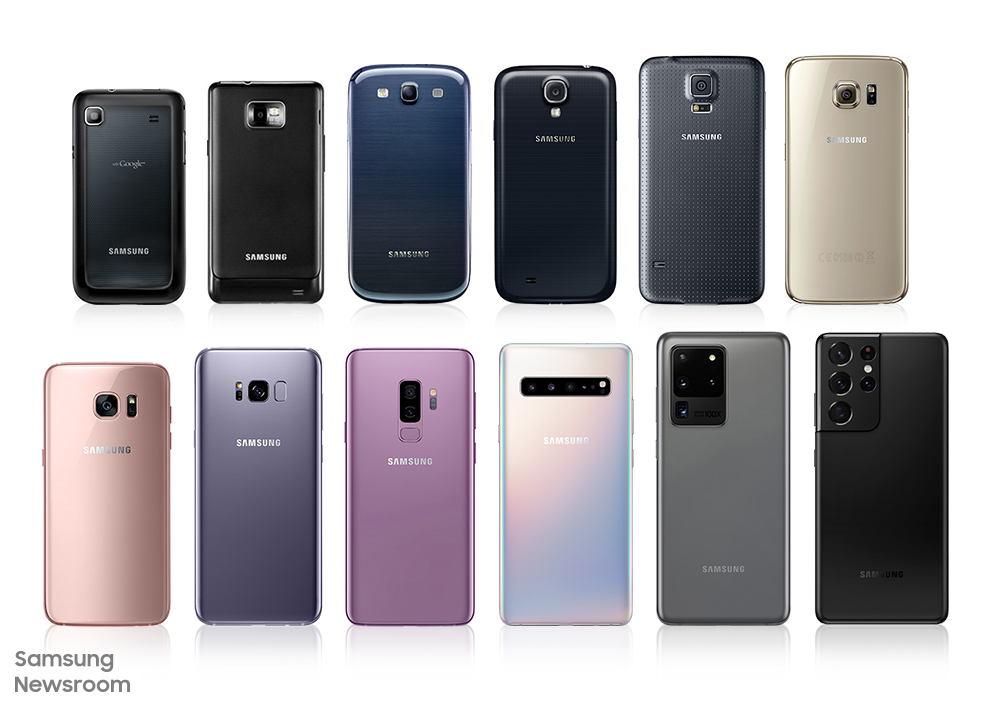
Samsung has long been recognized as a leader in the smartphone industry, and its flagship phones consistently set benchmarks for technology and innovation. The flagship range, primarily represented by the Galaxy S and Note series, is synonymous with cutting-edge features, premium design, and high performance. This article explores the evolution, highlights, and future direction of Samsung's flagship phones.
The Evolution of Samsung Flagship Phones
Samsung's journey in the flagship segment began with the Galaxy S series, which debuted in 2010. The Galaxy S marked a significant shift from previous offerings, introducing a sleek design and a vibrant Super AMOLED display, which quickly garnered praise for its color accuracy and depth. Over the years, subsequent models increasingly integrated advanced technologies, from improved cameras to faster processors.
In 2011, the Galaxy S II raised the bar with its slim profile and powerful hardware. This model set a precedent for future flagships, emphasizing the importance of lightweight designs without compromising performance. The introduction of the Galaxy S III in 2012 further solidified Samsung's dominance, boasting an impressive display and an innovative Smart Stay feature that kept the screen on while users were looking at it.
In 2014, the Galaxy S5 introduced water and dust resistance, a feature that became standard in later models. This was a clear indication that Samsung was not just focusing on performance but also on everyday usability and durability. The company's commitment to innovation was further illustrated with the launch of the Galaxy Note series in 2011, which pioneered the phablet category, combining the features of a smartphone and a tablet.
Key Features of Samsung Flagship Phones
Flagship devices are known for their state-of-the-art features, and Samsung consistently delivers:
- Display Technology: Samsung’s Super AMOLED technology has become the gold standard for smartphone displays. Recent flagship models feature Dynamic AMOLED displays, providing stunning color reproduction, deep blacks, and high resolution. The introduction of 120Hz refresh rates in the Galaxy S20 and later models has significantly enhanced the user experience, making animations smoother and gameplay more engaging.
- Camera Innovations: Samsung has continually pushed the boundaries in mobile photography. With each iteration, flagship phones have introduced better sensors, improved software algorithms, and advanced features like Night mode, 8K video recording, and Super Steady stabilization. The Galaxy S21 Ultra, for example, features a versatile camera system with up to 100x Space Zoom, catering to photography enthusiasts.
- Processing Power and Performance: Samsung's flagship phones are powered by the latest Snapdragon or Exynos processors, depending on the region. This ensures not only that users have a smooth experience when multitasking but also that they can harness the capabilities of advanced applications and games. Coupled with ample RAM and storage options, these devices are built to handle demanding tasks effortlessly.
- 5G and Connectivity: With the rollout of 5G networks, Samsung has integrated 5G capabilities into its flagship models, ensuring that users can experience lightning-fast download speeds and improved connectivity. Features such as Wi-Fi 6 support and ultra-wideband technology enhance overall connectivity, making them future-proof devices.
- Software and Ecosystem: Samsung’s One UI interface has evolved over the years to provide a user-friendly experience that balances customization with ease of use. Regular software updates and security patches ensure that flagship users benefit from the latest features and security enhancements. Additionally, Samsung's ecosystem extends into wearables, tablets, and smart home devic
es, providing a seamless user experience across devices.
Design Philosophy
Samsung’s flagship phones reflect a commitment to premium design. Using materials like glass and aluminum, these devices offer a luxurious feel and aesthetic appeal. The continuous refinement of design has led to slimmer profiles and minimized bezels, giving users more screen real estate. Models like the Galaxy Z Fold showcase innovations in form factors, seamlessly blending technology with usability.
Sustainability and Corporate Responsibility
As awareness of environmental issues grows, Samsung is also focusing on sustainability in its flagship devices. The company is committed to reducing its carbon footprint through energy-efficient manufacturing processes and materials. Initiatives aimed at recycling and reducing e-waste further underline Samsung's commitment to corporate responsibility.
Future Directions and Innovations
Looking ahead, Samsung continues to explore new avenues for innovation. The advent of foldable technology has opened up new possibilities in smartphone design, with the Galaxy Z series leading the way. These devices challenge traditional form factors and cater to users seeking a combination of portability and expansive screen real estate.
In addition, advancements in artificial intelligence (AI) and machine learning are likely to enhance user experience. By improving features such as voice recognition and predictive actions, Samsung aims to create a more personalized experience for users. The development of augmented reality (AR) features may also play a significant role in future flagship offerings, further integrating digital experiences into daily life.
Conclusion
Samsung's flagship phones have consistently demonstrated innovation, with each iteration building upon the last to deliver cutting-edge technology. From stunning displays and powerful processors to advanced camera systems and sleek designs, these devices continue to lead the smartphone market. As Samsung looks to the future, the integration of sustainability and ongoing technological advancements will likely keep the Galaxy series at the forefront of mobile technology, ensuring that it remains a top choice for consumers worldwide. With its rich history, commitment to quality, and forward-thinking approach, Samsung flagship phones are set to shape the future of mobile communication.












